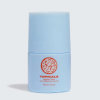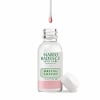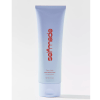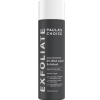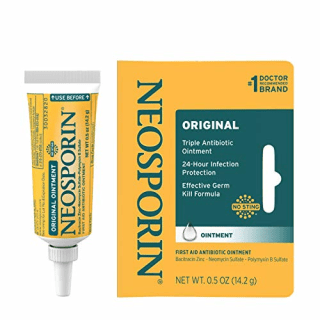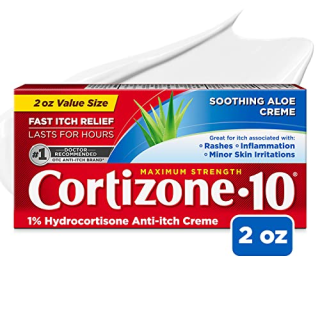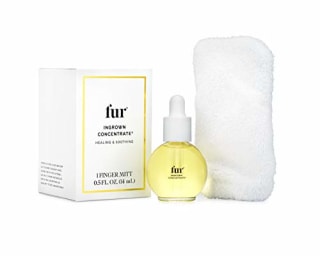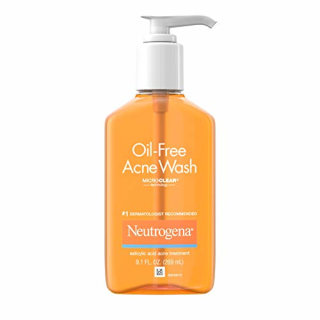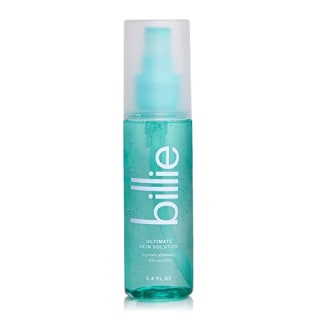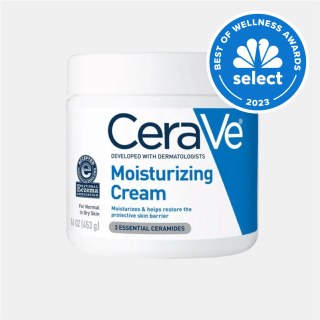Finding an ingrown hair a few days after shaving, waxing or epilating is frustrating. It’s caused by hair curling into and getting trapped underneath the skin, and can be itchy and painful. Thankfully, ingrown hairs, also commonly called razor bumps, are treatable at home, similar to razor burn. But don’t expect them to go away overnight. Being patient while using ingrown hair treatments is key to preventing infection and scarring later on.
To learn about how to treat and prevent ingrown hairs, I talked to four dermatologists. Using their guidance, I rounded up ingrown hair treatments and preventatives, all of which are either recommended by dermatologists or tested by NBC Select staff.
SKIP AHEAD Best ingrown hair treatments | Best products to prevent ingrown hair | How to avoid getting ingrown hair while shaving | Why trust NBC Select?
How I picked the best ingrown hair treatments
The best way to treat an ingrown hair is to free the trapped hair from underneath the skin in two steps (listed below).Consider the following while shopping for ingrown hair treatments:
- Calming irritation: Ingrown hairs can be swollen, inflamed and painful to the touch. Calming irritation before spot treating reduces pain so the treatment is more bearable, experts told me. Dermatologists recommend applying first-aid ointments along with cold compresses or ice packs.
- Spot treating bumps: You can spot treat the bumps associated with ingrown hairs like you would acne, says Dr. Mara Weinstein Velez, a board-certified dermatologist and assistant professor at the University of Rochester Medical Center. Use products made with ingredients like benzoyl peroxide and salicylic acid — these chemical exfoliants get rid of dead skin around and on top of the ingrown hair, allowing the hair to free itself, says Weinstein. She recommends using spot treatments twice a day. Your treatment plan should also include using warm compresses for 10 to 15 minutes per day, which softens the skin and encourages the trapped hair to come to the surface, says Dr. Y. Claire Chang, a board-certified cosmetic dermatologist at Union Square Laser Dermatology in Manhattan, New York.
The best ingrown hair treatments
To recommend the below ingrown hair treatments, I chose products that dermatologists recommend, we’ve used ourselves or are highly rated and meet expert shopping guidance. Since ingrown hairs can occur in any hair-bearing area, I note whether each product is meant for your face or body. Make sure to avoid removing hair in the area where you have an ingrown until it’s fully healed, experts told me.
Best first-aid ointment: Neosporin Original Antibiotic Ointment
- Protects against infection
- Helps heal skin
- Can reduce scarring
- Oily feel
Neosporin is my go-to antibiotic ointment for ingrowns, cuts and burns. It contains bacitracin, an over-the-counter topical antibiotic you can apply to red and inflamed ingrown hair, says Dr. Joshua Zeichner, the director of cosmetic and clinical research in dermatology and an associate professor of dermatology at Mount Sinai Hospital. The ointment also has a blend of other antibiotics that protect against infection and help heal skin, plus it can minimize the appearance of scars if you use it one to three times daily, according to the brand.
Use on: Face and body
Best anti-itch ointment: Cortizone 10 Maximum Strength Anti-Itch Cream with Aloe
- Reduces itching
- Calms irritation
- Fragrance-free
- Use four times daily, maximum
Hydrocortisone creams can help reduce inflammation and itching associated with ingrown hairs, says Chang. This option from Cortizone 10 is made with 1% hydrocortisone, which is the highest concentration of the ingredient found in over-the-counter products, according to our experts. In addition to ingrowns, I’ve used Cortizone 10 on bug bites, sunburns and razor burn, and you can apply it to eczema. The fragrance-free ointment is made with aloe, which helps soothe skin, according to the brand.
Use on: Face and body
Best roll-on treatment: Topicals High Roller Ingrown Hair Tonic
- Rollerball applicator
- Goes on clear
- Prevents dark spots
- May cause sun sensitivity
This fragrance-free salicylic acid spot treatment comes recommended by Ashley Morris, NBC Select associate SEO reporter. “It stops my ingrowns from forming into bigger bumps and fades the dark spots left behind by old ingrowns,” she says. “The rollerball applicator is my favorite part. It applies really smoothly and the tonic dries almost right away.” The rollerball applicator also allows you to target the ingrown without touching your skin and potentially transferring bacteria from your hands to the affected area. Topicals’ clear tonic contains zinc, a mineral that can minimize irritation; glycolic acid to further exfoliate; and niacinamide to brighten the appearance of the bump, according to the brand.
Use on: Face and body
Best drawing salve: Hyland’s Naturals Prid Drawing Salve
- Highly effective
- Multipurpose
- Natural ingredients
- Tar-like texture
- Has an odor
- Can stain fabric
“I’ve used Prid’s Drawing Salve for everything — cystic acne, slivers and even ingrown hairs,” says Lauren Swanson, NBC Select editorial director. “It’s very tar-like and smells gross, but it truly is a miracle worker. I slap this stuff on over ingrown hairs, put on a Band-Aid and then go to bed. When I wake up, it’s gone.” The salve is made with natural ingredients like sulfur, which relieves itch, silicea, which draws out hair trapped underneath the skin’s surface, and arnica, which reduces pain and swelling, according to the brand. Make sure you cover the area you apply this drawing salve to with a bandage or gauze — it’s brown in color and can stain fabric.
Use on: Face and body
Best healing serum: Fur Ingrown Concentrate
- Exfoliating mitt included
- Anti-inflammatory
- Easy to use dropper dispenser
- Best to use after showering
Fur’s Ingrown Concentrate contains tea tree oil, which has anti-inflammatory properties and helps prevent ingrown hairs from getting infected, says Chang. The treatment is also made with chamomile extract to minimize redness and coconut, tamanu and grape seed oils to hydrate and soften skin, according to the brand. Before applying the concentrate, Fur recommends exfoliating with the included finger mitt in the shower. Then, once you dry off, apply a few drops to bumps.
Use on: Face and body
Best overnight treatment: Mario Badescu Drying Lotion
- Exfoliating
- Reduces itch
- Calms irritation
- Leaves behind a chalky residue
- Must apply with cotton swab
Mario Badescu’s Drying Lotion is my favorite overnight treatment for ingrowns. It dries them up while I’m sleeping and makes them appear much less red and swollen in the morning. The lotion has salicylic acid to remove dead skin cells sitting on top of and around ingrown hairs, and calamine, an ingredient that reduces itching and irritation, according to the brand. You dip a cotton swab into the pink sediment at the bottom of the bottle and dab it directly onto the ingrown. The lotion dries quickly but leaves a light pink, chalky residue behind, which is why I prefer to use it at night.
Use on: Face and body
How I picked the best products to prevent ingrown hair
Your skin care routine matters when it comes to hair removal, says Weinstein. If your skin isn’t in good shape when you remove hair, new hair won’t grow back normally. Preventing ingrowns mostly centers around caring for your skin before, after and in between hair removal sessions. Here are some factors to consider when shopping for products that help you do so:
- Cleansing: If you’re prone to ingrowns, use a face or body wash made with benzoyl peroxide, salicylic acid or glycolic acid, says Weinstein. These ingredients help reduce bacteria on skin and prevent it from spreading.
- Exfoliating: This is key to preventing ingrown hairs, especially if you’re prone to them, experts told me. Exfoliating is the process of removing dead cells from the surface of the skin, essentially clearing the path for new hair to grow, says Zeichner. There are two types of exfoliants: chemical and physical (sometimes called manual). Chemical exfoliants include alpha hydroxy acids (AHAs) like lactic acid and glycolic acid, and beta hydroxy acids (BHAs) like salicylic acid, that help skin cells shed more easily, says Zeichner. Physical exfoliants, on the other hand, are scrubs that contain little beads or grains, which you rub into skin to manually remove dead cells. It’s best to exfoliate between shaves so skin has time to heal after coming into contact with a razor, says Dr. Jane Yoo, a board certified cosmetic dermatologist and Mohs surgeon based at her private practice in New York City.
- Moisturizing: After you remove hair, hydrate the skin around the hair follicles with face moisturizer or body lotion, says Weinstein. She recommends opting for oil-free varieties — oil-based moisturizers can clog pores, unless they’re labeled noncomedogenic.
The best products to prevent ingrown hair
Best body wash: Cetaphil Acne Relief Body Wash
- Gentle on skin
- Lotion-like consistency
- Fragrance-free
- Spot-test on dry skin
Anyone prone to ingrowns on their body may want to consider a salicylic acid body wash, which reduces the amount of bacteria on skin and ensures it’s clean before you remove hair, says Weinstein. This one is a NBC Select Wellness Award winner and it’s made with moisturizing ingredients like glycerin, shea butter and soybean oil. The fragrance-free body wash has a gentle, creamy, lotion-like consistency and it doesn’t get sudsy, in my experience. It comes in a pump, which I find helps me control how much body wash I’m dispensing.
Use on: Body
Best face wash: Neutrogena Oil-Free Acne Wash
- Unclogs pores
- Gets foamy
- Oil-free formula
- Spot-test on dry skin
If you get ingrowns on your face (especially after shaving facial hair), experts recommend opting for a gentle acne face wash like this one, which contains salicylic acid. It has a jelly consistency when it comes out of the pump, but it gets foamy as you massage it into your skin with your fingers or a facial cleansing brush, in my experience. The face wash helps eliminate oil buildup on skin and unclogs pores, according to the brand.
Use on: Face
Best exfoliating scrub: Selfmade True Grit Resilience Scrub
- Gentle yet gritty feel
- Unclogs hair follicles
- Doubles as scalp scrub
- Spot-test on sensitive skin
While experts say manual exfoliants can irritate ingrown hairs, you can use them on unaffected skin between shaves. Selfmade (one of our favorite AAPI-owned brands) sent me its True Grit Resilience Scrub to try, and it has a gentle yet gritty feel that makes my skin soft after I massage it in. The scrub contains chemical exfoliants like ascorbic acid, an AHA that’s the most powerful form of vitamin C. It also has tea tree oil to unclog hair follicles, according to the brand. I use this scrub on my legs and underarms once or twice a week, but you can use it daily so long as you don’t have dry or sensitive skin.
Use on: Face and body
Best exfoliating spray: Billie Ultimate Skin Solution
- Dries quickly
- Easy to apply
- Treatment and preventative
- Light scent
I use Billie’s Ultimate Skin Solution to treat and prevent ingrowns on my legs and underarms. The spray contains salicylic acid and aloe vera to dissolve built-up dead cells while calming the skin, according to the brand. I find that the spray bottle makes this solution easy to apply to large and small patches of skin, and it dries quickly. The spray also doesn’t leave behind a sticky residue and never causes my sensitive skin to sting after application.
Use on: Face and body
Best liquid exfoliant: Paula’s Choice Skin Perfecting 2% BHA Liquid Exfoliant
- Lightweight feel
- Absorbs quickly
- Long-lasting bottle
- Spot-test on sensitive skin
- Must apply with cotton pad
After you shave, apply a BHA-based product to close the hair follicles that opened when they were exposed to warm water, says Weinstein. Doing so prevents bacteria or dirt from getting into the follicles. This chemical exfoliant from Paula’s Choice has salicylic acid (a BHA) and green tea extract to calm redness. The formula is lightweight and feels refreshing on my skin when I apply it using a cotton pad. It also absorbs into my skin quickly, so I can layer other products on top of it, like moisturizer. While the exfoliant is mainly meant for your face and neck, you can also apply it to other parts of the body post-shave.
Use on: Face and body
Best witch hazel toner: Thayer’s Original Witch Hazel Facial Toner
- Gentle on skin
- Hydrating
- Alcohol-free formula
- Must apply with cotton pad
Those with very sensitive skin may not be able to tolerate BHAs to close hair follicles after shaving. Witch hazel is an alternative ingredient that does the same job, but it’s gentler on skin, says Weinstein. Thayer’s Witch Hazel Facial Toner comes recommended by Cory Fernandez, NBC Select editor. He applies it with a cotton pad immediately after shaving, and when he does so consistently, he notices that less ingrowns pop up on his face. The hydrating toner has an alcohol-free formula that minimizes the appearance of pores, as well as evens skin tone and texture, according to the brand. It’s available in different versions with additional ingredients like rose petal, coconut water, lavender and cucumber.
Use on: Face and body
Best moisturizer: CeraVe Moisturizing Cream
- Fragrance-free
- Noncomedogenic
- Great for sensitive skin
- Messy to remove from tub
Moisturizing should always be the last step of a hair removal session, experts told me. CeraVe’s cream — a Select Wellness Award winner — is a noncomedogenic option for the body, face and hands. It’s made with hyaluronic acid to help skin retain moisture and ceramides to support the skin’s outer layer, according to the brand. The cream earned the National Eczema Association’s Seal of Acceptance, meaning it’s suitable for sensitive skin.
Use on: Face and body
How to avoid getting ingrown hair while shaving
Shaving is the most common type of at-home hair removal, and improper technique is often the culprit of razor bumps and burns. To help you avoid both, here are some expert shaving tips. Also remember that you shouldn’t shave (or do any type of hair removal) in the area where you have an ingrown until it’s fully healed, experts told us.
- Shave at the end of a shower so your skin has time to soften in the warm water, says Yoo. If skin is soft when you shave, hair is less likely to curl backward and potentially get trapped underneath the skin surface.
- Shave with a moisturizing shaving cream or gel to reduce friction between the razor and the skin surface, says Yoo. Use an unscented or fragrance-free shaving cream, especially if you have sensitive skin or a recently healed ingrown hair, says Weinstein. Scents and fragrances can irritate skin.
- While you’re shaving, use short, single strokes in the direction of hair growth, says Yoo.
- Use razors with a built-in comb on the leading edge of the blade, which lift hair up to help cut it at an appropriate angle and length, says Zeichner. “If you cut hair above the skin surface, it’s less likely to become an ingrown,” he says.
- Never use a dull razor, which tends to give hair a jagged edge after its cut and makes it more likely to curl back into and get trapped underneath the skin, says Zeichner. A single blade razor tends to stay sharp for about three to five shaves, says Yoo. If your razor has multiple blades, check the product’s packaging or the brand’s website to see how often you should swap out your razor.
- Keep your razor in a dry place when it’s not in use to prevent it from harboring bacteria, says Yoo. Leaving your razor in wet, humid areas like in the shower or by the sink can cause you to transfer bacteria to your skin while shaving.
Meet our experts
At NBC Select, we work with experts who have specialized knowledge and authority based on relevant training and/or experience. We also take steps to ensure that all expert advice and recommendations are made independently and with no undisclosed financial conflicts of interest.
- Dr. Joshua Zeichner is the director of cosmetic and clinical research in dermatology and an associate professor of dermatology at Mount Sinai Hospital.
- Dr. Y. Claire Chang is a board-certified cosmetic dermatologist at Union Square Laser Dermatology in New York City, NY.
- Dr. Jane Yoo is a board certified cosmetic dermatologist and Mohs surgeon based at her private practice in New York City, NY.
- Dr. Mara Weinstein Velez is a board-certified dermatologist and assistant professor with the University of Rochester Medical Center.
Why trust NBC Select?
I am an associate updates editor at NBC Select who writes about skin care, including articles on ingrown hair, razor burn, sunscreen for acne-prone skin and sunburns. For this article, I interviewed four experts about how to treat and prevent ingrown hair. Using their guidance, I put together a list products dermatologists recommend and those NBC Select staff have tested.
Catch up on NBC Select’s in-depth coverage of personal finance, tech and tools, wellness and more, and follow us on Facebook, Instagram, Twitter and TikTok to stay up to date.

